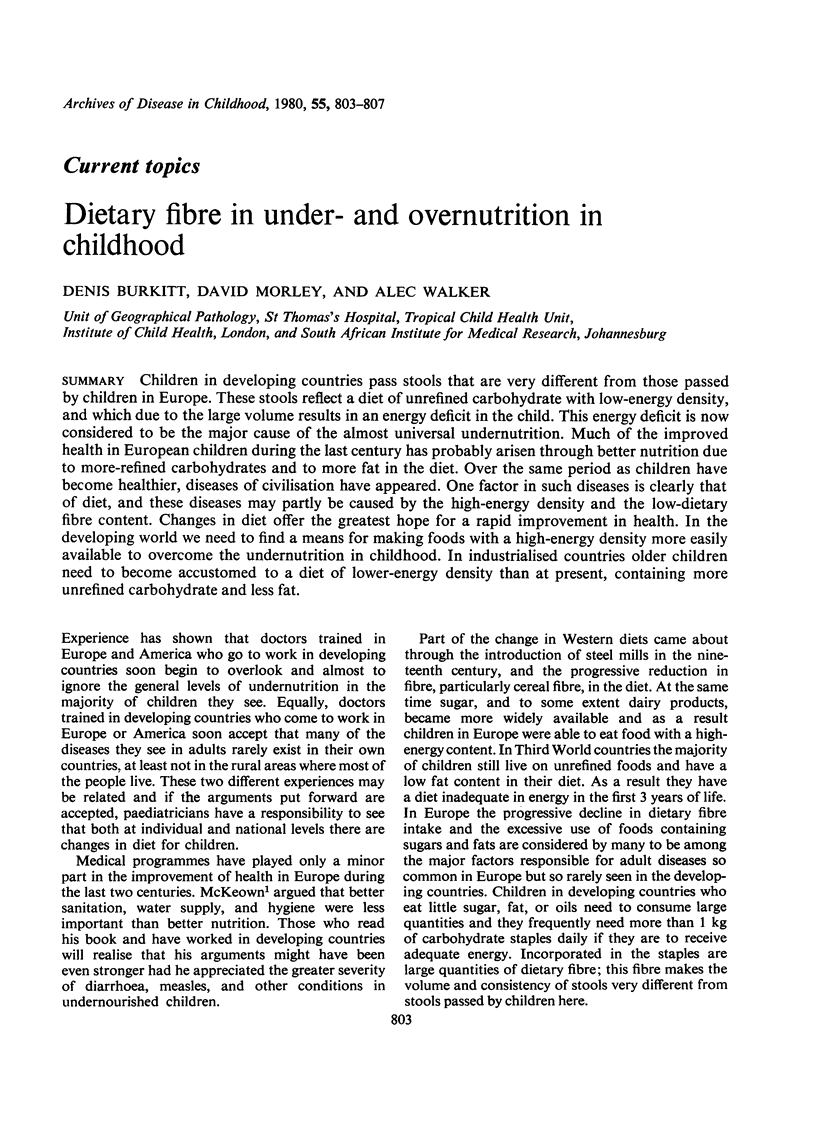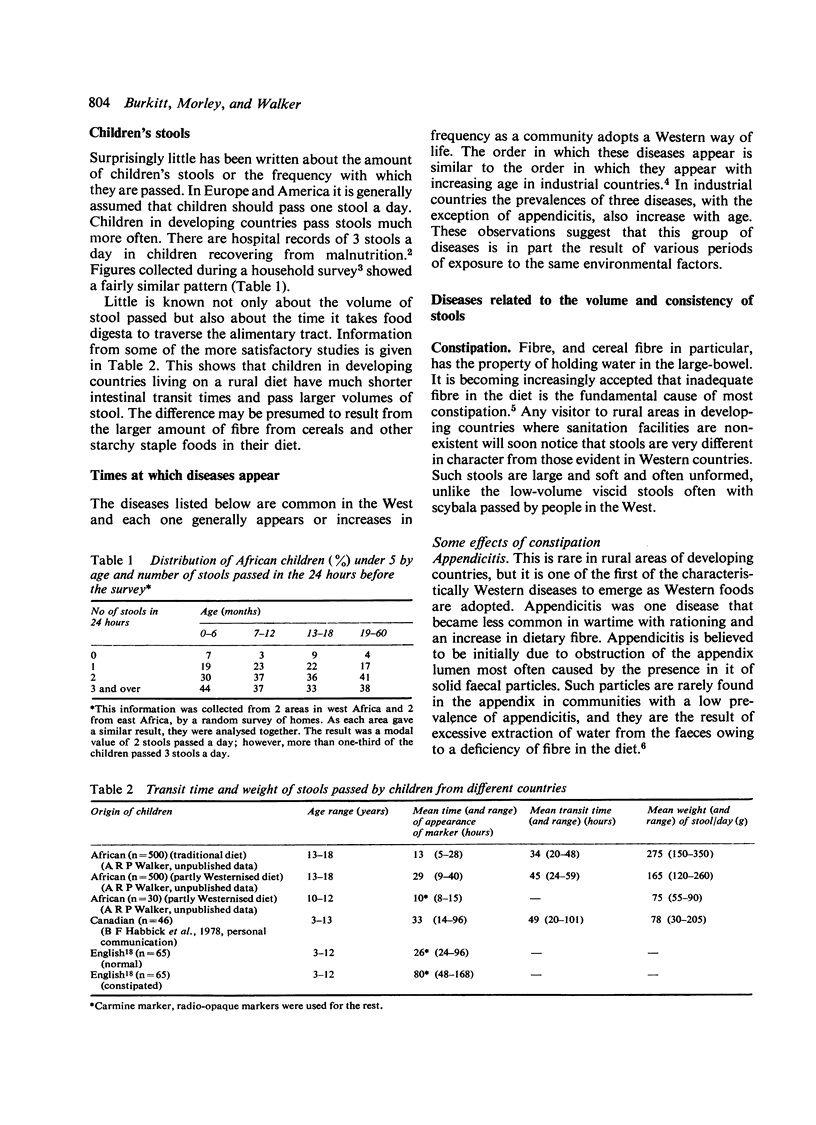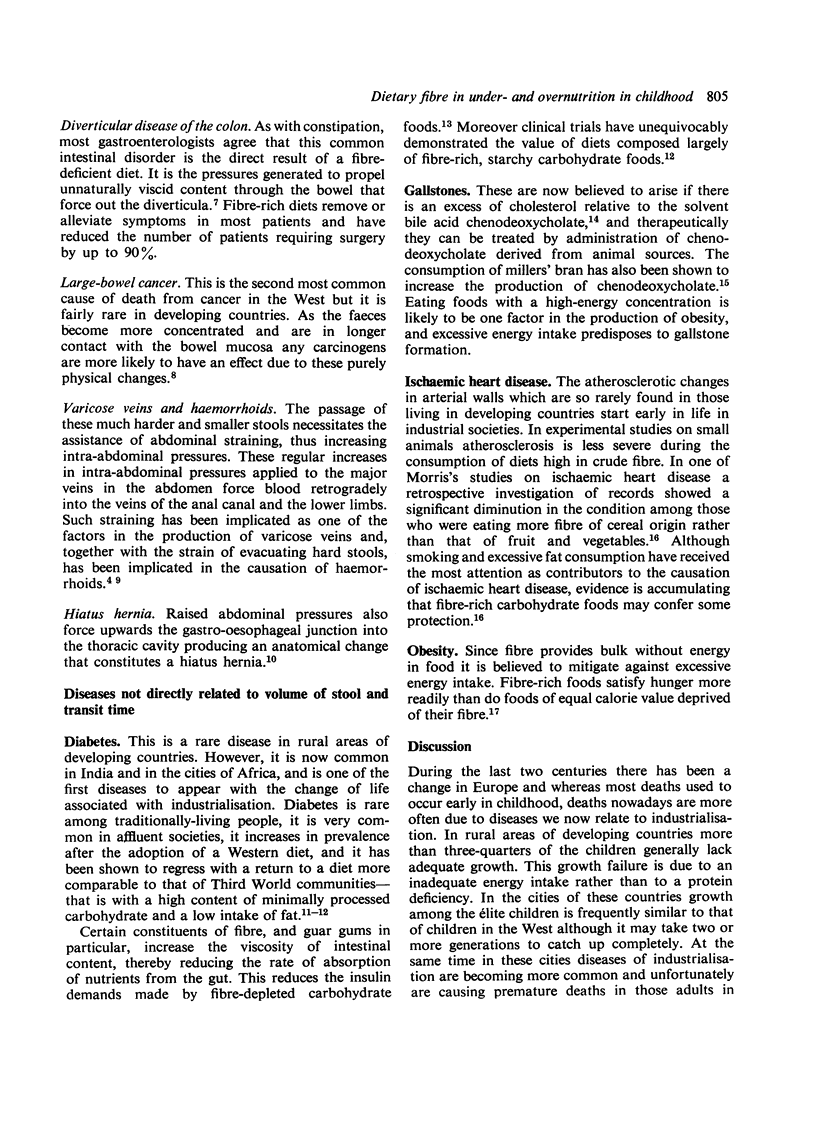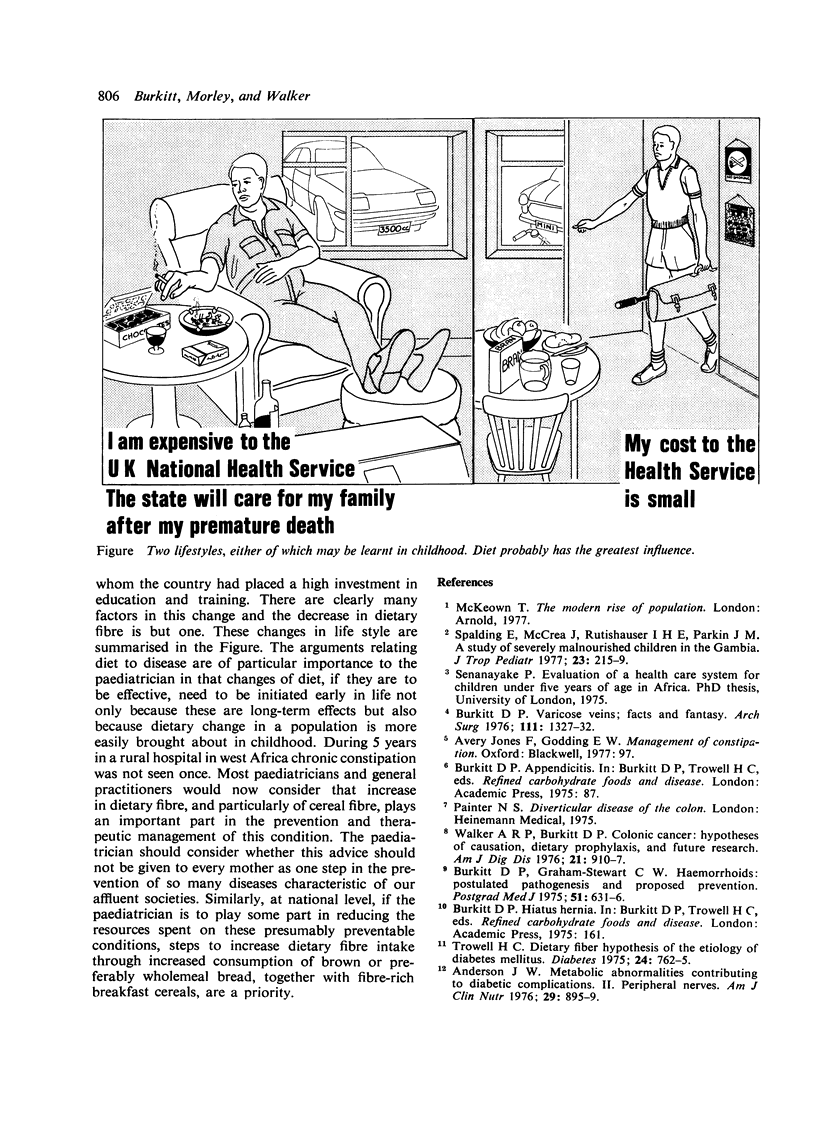Abstract
Children in developing countries pass stools that are very different from those passed by children in Europe. These stools reflect a diet of unrefined carbohydrate with low-energy density, and which due to the large volume results in an energy deficit in the child. This energy deficit is now considered to be the major cause of the almost universal undernutrition. Much of the improved health in European children during the last century has probably arisen through better nutrition due to more-refined carbohydrates and to more fat in the diet. Over the same period as children have become healthier, diseases of civilisation have appeared. One factor in such diseases is clearly that of diet, and these diseases may partly be caused by the high-energy density and the low-dietary fibre content. Changes in diet offer the greatest hope for a rapid improvement in health. In the developing world we need to find a means for making foods with a high-energy density more easily available to overcome the undernutrition in childhood. In industrialised countries older children need to become accustomed to a diet of lower-energy than at present, containing more unrefined carbohydrate and less fat.
Full text
PDF




Selected References
These references are in PubMed. This may not be the complete list of references from this article.
- Burkitt D. P., Graham-Stewart C. W. Haemorrhoids--postulated pathogenesis and proposed prevention. Postgrad Med J. 1975 Sep;51(599):631–636. doi: 10.1136/pgmj.51.599.631. [DOI] [PMC free article] [PubMed] [Google Scholar]
- Burkitt D. P. Varicose veins: facts and fantasy. Arch Surg. 1976 Dec;111(12):1327–1332. doi: 10.1001/archsurg.1976.01360300017002. [DOI] [PubMed] [Google Scholar]
- Dimson S. B. Carmine as an index of transit time in children with simple constipation. Arch Dis Child. 1970 Apr;45(240):232–235. doi: 10.1136/adc.45.240.232. [DOI] [PMC free article] [PubMed] [Google Scholar]
- Haber G. B., Heaton K. W., Murphy D., Burroughs L. F. Depletion and disruption of dietary fibre. Effects on satiety, plasma-glucose, and serum-insulin. Lancet. 1977 Oct 1;2(8040):679–682. doi: 10.1016/s0140-6736(77)90494-9. [DOI] [PubMed] [Google Scholar]
- Jenkins D. J., Wolever T. M., Leeds A. R., Gassull M. A., Haisman P., Dilawari J., Goff D. V., Metz G. L., Alberti K. G. Dietary fibres, fibre analogues, and glucose tolerance: importance of viscosity. Br Med J. 1978 May 27;1(6124):1392–1394. doi: 10.1136/bmj.1.6124.1392. [DOI] [PMC free article] [PubMed] [Google Scholar]
- Kiehm T. G., Anderson J. W., Ward K. Beneficial effects of a high carbohydrate, high fiber diet on hyperglycemic diabetic men. Am J Clin Nutr. 1976 Aug;29(8):895–899. doi: 10.1093/ajcn/29.8.895. [DOI] [PubMed] [Google Scholar]
- Morris J. N., Marr J. W., Clayton D. G. Diet and heart: a postscript. Br Med J. 1977 Nov 19;2(6098):1307–1314. doi: 10.1136/bmj.2.6098.1307. [DOI] [PMC free article] [PubMed] [Google Scholar]
- Pomare E. W., Heaton K. W. Alteration of bile salt metabolism by dietary fibre (bran). Br Med J. 1973 Nov 3;4(5887):262–264. doi: 10.1136/bmj.4.5887.262. [DOI] [PMC free article] [PubMed] [Google Scholar]
- Spalding E., McCrea J., Rutishauser I. H., Parkin J. M. A study of severely malnourished children in the Gambia. J Trop Pediatr Environ Child Health. 1977 Oct;23(5):215–219. doi: 10.1093/tropej/23.5.215. [DOI] [PubMed] [Google Scholar]
- Trowell H. C. Dietary-fiber hypothesis of the etiology of diabetes mellitus. Diabetes. 1975 Aug;24(8):762–765. doi: 10.2337/diab.24.8.762. [DOI] [PubMed] [Google Scholar]
- Walker A. R., Burkitt D. P. Colonic cancer--hypotheses of causation, dietary prophylaxis, and future research. Am J Dig Dis. 1976 Oct;21(10):910–917. doi: 10.1007/BF01072087. [DOI] [PubMed] [Google Scholar]


